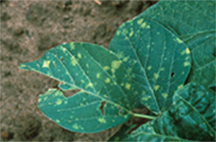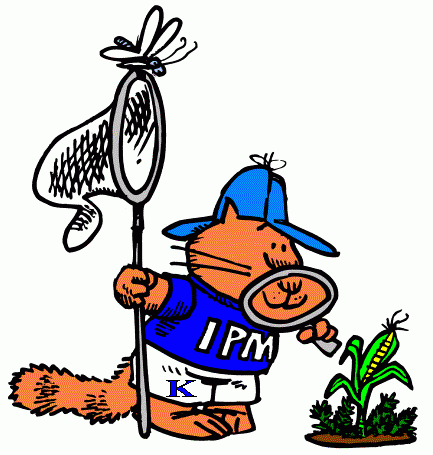Downy Mildew in Soybeans
Downy Mildew
Symptoms
Downy mildew is rarely a serious problem in Kentucky; nonetheless, low levels of the disease, primarily foliar

Downey Mildew
University of Kentucky Dept. Plant Pathology
infections, are very common. With foliar infections, foliage develops yellow spots that enlarge slightly into irregular gray-brown spots with a yellowish margin. When viewed from the underside of leaves, spots have a slightly gray, fuzzy appearance. Leaves become resistant to infections with age.
When pods become infected, the fungus is visible inside the pods as an encrusted fungal mass.
Infected seed has a dull white appearance and is partially or completely encrusted by the causal fungus, but germination will be little affected.
Cause
The causal fungus, Peronospora manshurica, overwinters in infested crop debris or seed. Spores are spread to and infect soybeans during periods of high humidity/moisture and relatively cool temperatures. Excessive soil moisture may encourage disease development.
IPM Techniques
- Plant high-quality, disease-free seed or certified seed. Rotate soybeans with other crops.
- Plow under infested residue where downy mildew has been a serious problem.
- Cultivars with resistance to downy mildew are available, but the reactions of commonly grown soybean cultivars are poorly defined.
References and Additional Information
- PPA-10b Kentucky Plant Disease Management Guide for Soybean by D.E. Hershman, Extension Plant Pathology, University of Kentucky
- Compendium of Soybean Diseases, J.B. Sinclair and P. A. Backman (The American Phytopathological Society Press)


